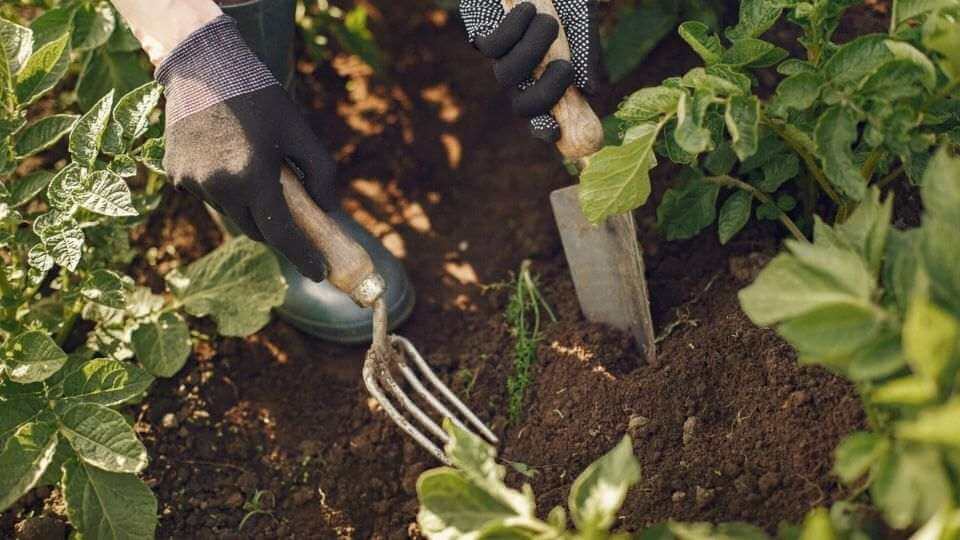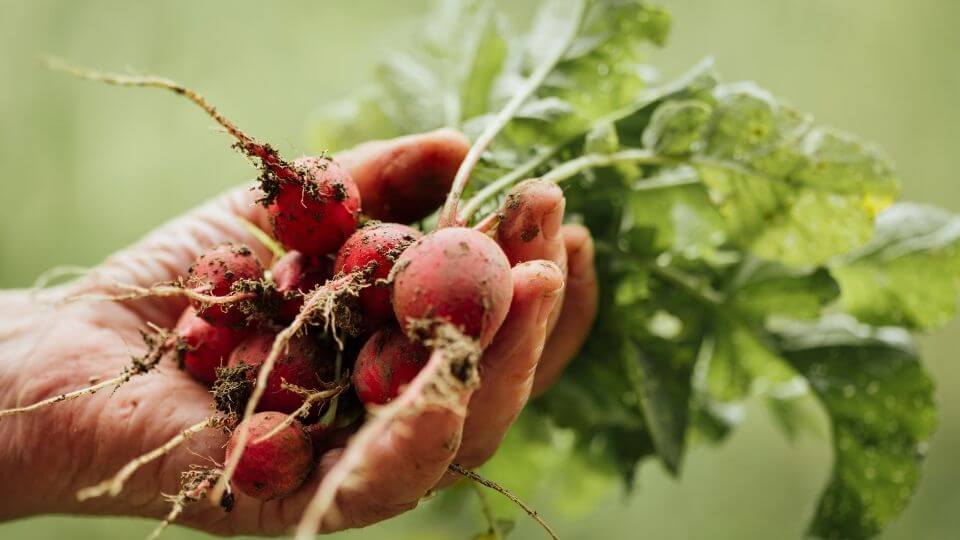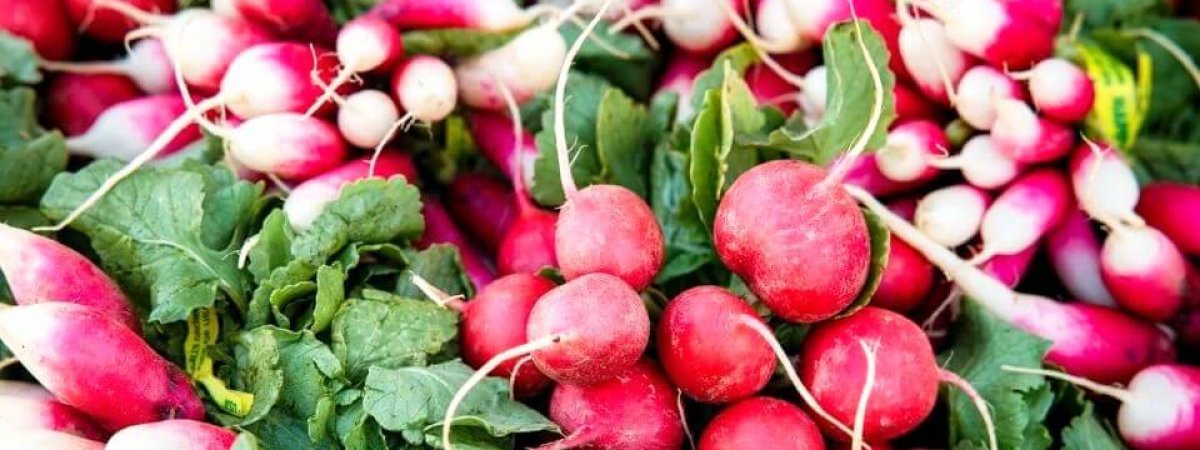Radishes are fast-growing vegetables that are easy to plant but it can get overwhelming during harvest. Why? Well, imagine every seed sowed sprouting and within a few days, you have hundreds of radishes to harvest!
For gardeners who have just started experimenting with vegetable gardening, how to grow radish can prove as motivation because it is a cruciferous crop yielding quick rewards. If you want to encourage your kids to try out gardening, let them sow some radish seeds!
The fast growth of the veggies allows the children to pull the roots in as few as 3 weeks from the day of sowing. In this blog, we have brought you all the information on how to grow radish. You can grow these edible roots in your backyard.

How to grow radish?
For growing radish, you need to choose an appropriate variety from the two basic types – winter and spring.
Winter varieties: The ‘Long Black Spanish’ and ‘China Rose’ are the winter varieties that demand longer growing time. However, these are preferred over the spring variety by many expert gardeners because they retain quality longer in the garden, store well, and have a better flavor.
Spring varieties: These include ‘Champion’, ‘Crimson Giant’, ‘Cherry Bomb’, and ‘Burpee White’. Plant these in early spring to help them reach maturity in the cool weather for better quality and production. These varieties mature within a month.
You can go for a mix of both types to harvest radishes throughout the seasons – spring, fall, and winter.
Planting Radishes
- Plant the seeds in a sunny spot. When planted in shade, most of its energy is invested in growing bigger leaves. Do not plant the radish seeds close to other vegetable plants that might shade them.
- Similar to carrots, radishes are grown for their roots. Your soil should be rich in organic matter, but not compacted. If the garden soil is clay-like, add some sand to loosen it for proper drainage.
- For soil with lesser organic matter, mix some all-purpose fertilizer or aged compost in the planting location soon after the soil is ready for sowing seeds.
- Remove any rocks or dirt clods in the planting site.
- Carry out 3-year crop rotation – plant radishes in the same location every third year. It helps protect your plant against diseases and pest infestation.
- When going for a spring plantation, sow your seeds four to six weeks before the last frost date.
- Sow the seeds directly on the planting side to ensure the roots are not disturbed during the growth period.
- Sow them half or one inch deep and each seed must have at least an inch of distance, and the rows 12 inches from each other.
- Keep planting a round of seeds in 10 days throughout the cool season. This ensures you get a regular harvest even in late spring and early summer.
- Radish is a vegetable that can be planted in the fall and produce yield for an early fall or late summer harvest. For this, sow the seeds four to six weeks before the first harvest.
- When your radish plant turns a week old, thin them to two inches apart. If crowded, it won’t grow well.
- Your plant will require consistent moisture, but not waterlogged. Practice drip irrigation to regulate even moisture.
- Add a thin mulch layer to retain moisture during dry climate/drought conditions.
Harvesting radishes
- As said, radishes grow very fast – some varieties in less than three weeks!
- In the case of most radish varieties, harvest them when you see the roots are one inch in diameter on the soil surface.
- Pull one out to test before continuing to harvesting all.
- Once mature, do not leave the vegetables in the ground for long or they will start losing their quality.
- Cut the tops and thin the root tail off. Wash the radishes and allow them to dry completely.
- You can now put them in plastic bags and store them in the refrigerator
- The greens of the plant can be stored separately for almost three days.

Taking care of radishes
- Always keep the planting beds moist. Regularly watering the plant will also promote faster growth. However, make sure not to make the soil wet.
- Radish not watered well become woody in taste.
- To feed the planting beds, add aged compost. In midseason, you can also side-dress the crop with an all-purpose fertilizer or aged compost.
- When grown during midsummers, radishes will go to seed or bolt. To avoid this, cover your plants to control the amount of sunlight they receive throughout the day. The slow growth of radishes may make them taste hot.
- Aphids and root maggots are pests that may attack your radish plants. To keep your plants protected, pinch out the infested greens. However, pests are not a major factor to worry about for the fast-growing vegetables.
Conclusion
Radishes are edible roots that grow very fast, within three weeks for some varieties. Now that you are well-versed with how to grow radish, you can easily get these cruciferous vegetable growing in your garden or backyard.
Just remember a few things – moist soil, proper spacing, and you are good to go!







One thought on “How to grow Radish – The Fast Growing Root Vegetable”